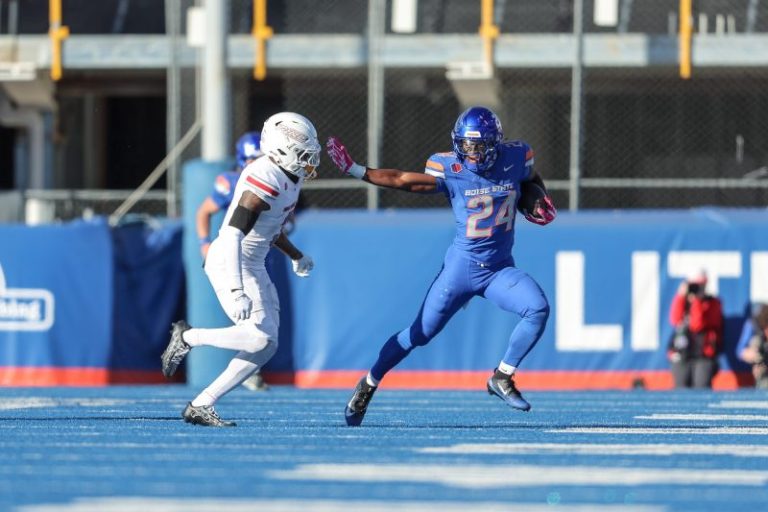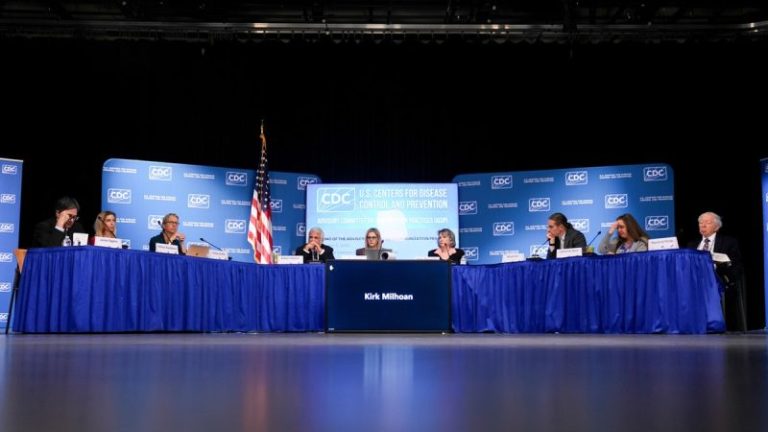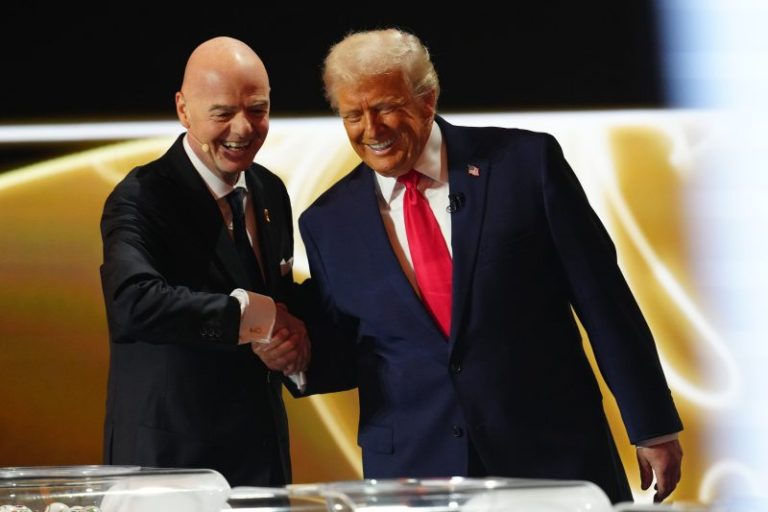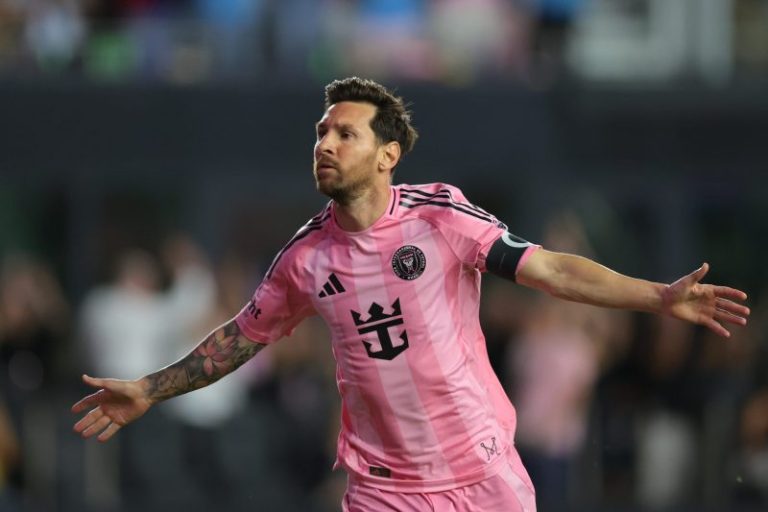Amid a conference championship weekend where College Football Playoff seeding is determined are fought over and Power Four conferences jockey for national supremacy, a gem of a game awaits in Boise, Idaho.
Boise State (8-4) will host UNLV (10-2) in the Mountain West championship game in Albertsons Stadium. It’s the last opportunity for the Broncos — who will join the remade Pac-12 Conference beginning in the 2026 college football season — to win the MWC title.
They have won at least a share of the championship six times in program history, including five MWC championship games.
Watch the Mountain West championship game on Fubo (free trial)
Standing in there way is a UNLV coach led by former Mississippi State and Florida coach Dan Mullen, who has the Rebels challenging for a conference title in just his first season in Las Vegas. The teams met earlier in the season, however, with Boise State earning a commanding 56-31 on Oct. 18.
Can Boise State beat UNLV twice in the same season for one final Mountain West title? Or will Mullen lead revenge against the Broncos en route to a Year 1 conference title?
USA TODAY is bringing you live updates, scores and highlights from the game. Follow along:
UNLV vs Boise State score
UNLV vs Boise State live updates
This section will be updated.
Second quarter: Boise State 14, UNLV 0
UNLV punts again
Stop us if you’ve heard this: UNLV has punted. The Rebels are unable to convert on third down to open the second quarter and, following a shanked punt by Cam Brown, the Broncos take over at their own 33-yard line looking to make it a three-score game.
First quarter: Boise State 14, UNLV 0
Boise State lengthens lead with another touchdown
Another Boise State drive, another touchdown. Madsen checks it down to running back Dylan Riley and he walks it in from 9 yards out to lengthen Boise State’s lead to 14-0. The drive traverses 67 yards in five plays and 2:17 of game clock. The big play of the drive is a 44-yard catch by Cameron Bates that gets Boise State to the UNLV 23-yard line.
UNLV misses field goal
UNLV’s third drive doesn’t end with a punt or a fumble, but a missed field goal. Ramon Villela’s 50-yard attempt misses just wide right, and will give Boise State the ball at its own 32-yard line.
Maddux Madsen scrambles for touchdown
And just like that, Boise State gets on the board. Two plays after Madsen’s 45-yard pitch-and-catch, he scrambles 10 yards to the corner of the end zone to open the scoring. The drive goes 51 yards in five plays, taking 2:48 of game clock. Boise State leads 7-0 with 6:40 in the first quarter.
Boise State breaks long play, in scoring position
Great play by Boise State quarterback Maddux Madsen who, following a UNLV to bring up third-and-17, connects with Chase Penry for a 45-yard gain all the way down to the UNLV 12-yard line.
UNLV fumbles, goes three-and-out to open game
Not the greatest start for UNLV’s offense, which opens the game with a fumble in Boise State territory followed by a three-and-out on the ensuing drive, which started at its own 11-yard line. Following the punt, Boise State will take over just shy of midfield for its second drive of the game.
Boise State recovers fumble
A promising UNLV drive is undone in Boise State territory. Anthony Colandrea connects with Jaden Bradley for a first-down conversion on third-and-11 at the Broncos’ 40-yard line, but has the ball dislodged by Boise State’s Boen Phelps. The Broncos jump on the ball and take over at their own 41-yard line.
Pregame
Boise State kicks off, giving quarterback Anthony Colandrea and the Rebels the ball first. We’re underway in Boise!
Boise State vs UNLV in MWC championship
Of note: This is the third straight Mountain West championship between Boise State and UNLV. The Broncos won each of the last two.
UNLV warming up
Here are some early looks at UNLV warming up at Albertsons Stadium. Temperature at kickoff is expected to be in the low-to-mid 40s.
Mountain West tiebreaker, explained
For those curious how the Mountain West determined UNLV and Boise State as its two championship game participants, here’s an explanation from commissioner Gloria Nevarez:
Who is coaching UNLV?
College football fans tuning in for their first Mountain West game this season may recognize a familiar face on the UNLV sidelines: Former Mississippi State and Florida coach Dan Mullen, who was hired by the Rebels on Dec. 12, 2024. Mullen has led UNLV to a 10-2 record in his first regular season in Las Vegas.
Is Boise State leaving Mountain West Conference?
The Dec. 5 game between Boise State and UNLV is bittersweet for Mountain West fans: It marks the penultimate game the Broncos will compete as a Mountain West team, and the last one against another Mountain West opponent. The Broncos will join the reformed Pac-12 Conference beginning with the 2026 college football schedule.
What time does UNLV vs Boise State start?
Date: Friday, Dec. 5
Time: 8 p.m. ET | 6 p.m. MT
Where: Albertsons Stadium (Boise, Idaho)
Boise State and UNLV will kick off at 8 p.m. ET (6 p.m. local) on Saturday, Dec. 6 from Albertsons Stadium in Boise, Idaho.
What TV channel is UNLV vs Boise State on today?
TV channel: Fox
Livestream: Fox Sports app | Fubo (free trial)
The Mountain West championship game between UNLV and Boise State will be broadcast on Fox. The announcers will be Jason Benetti (play-by-play), Robert Griffin III (analyst), and Alexa Landestoy (sideline reporter).
Streaming options for the game include the Fox Sports app and Fubo, which carries Fox and offers a free trial to new subscribers.
UNLV vs Boise State predictions
Jordan Mendoza, USA TODAY: Boise State 33, UNLV 28
Boise State really lucked out getting a team it has already beaten this season and playing this game at home. While this game shouldn’t be a blowout like the first matchup, Boise State is able to limit UNLV’s offense from taking control of the game, and a late stop seals one last Mountain West title for the Broncos.
Austin Curtright, USA TODAY Network: UNLV 30, Boise State 27
It’d only be fitting for Boise State, the most dominant Mountain West program in recent years, to go out with a conference title before it moves to the Pac-12 next season. However, UNLV and first-year coach Dan Mullen play spoiler, as Mullen puts together one of the best coaching jobs in college football this season.
Craig Meyer, USA TODAY Network: Boise State 34, UNLV 30
The Broncos had their way with the Rebels the first time these teams met up, a decisive 56-31 victory on Oct. 18 in Vegas. Ashton Jeanty isn’t walking through that door for Boise State, but its running back tandem of Dylan Riley and Sire Gaines has come on in recent weeks. Between that and what are projected to be cold, rainy conditions for the game against a team from the desert that plays in a climate-controlled environment, I like the Broncos to leave the Mountain West as its champion, once again.
UNLV football schedule 2025
Here’s a look at UNLV’s schedule in 2025, including past scores.
Saturday, Aug. 23: UNLV 38, Idaho State 31
Friday, Aug. 29: UNLV 38, Sam Houston 21
Saturday, Sept. 6: UNLV 30, UCLA 23
BYE
Saturday, Sept. 20: UNLV 41, Miami (Ohio) 38 *
BYE
Saturday, Oct. 4: UNLV 31, Wyoming 17 *
Saturday, Oct. 11: UNLV 51, Air Force 48 *
Saturday, Oct. 18: Boise State 56, UNLV 31 *
BYE
Saturday, Nov. 1: New Mexico 40, UNLV 35 *
Saturday, Nov. 8: UNLV 42, Colorado State 10 *
Saturday, Nov. 15: UNLV 29, Utah State 26 (OT) *
Friday, Nov. 21: UNLV 38, Hawaii 10 *
Saturday, Nov. 29: UNLV 42, Nevada 17 *
Friday, Dec. 5: UNLV vs Boise State | Fox **
* denotes Mountain West game
** denotes Mountain West championship game
Boise State football schedule 2025
Here’s a look at Boise State’s schedule in 2025, including past scores.
Thursday, Aug. 28: South Florida 34, Boise State 7
Friday, Sept. 5: Boise State 51, Eastern Washington 14
BYE
Saturday, Sept. 20: Boise State 49, Air Force 37*
Saturday, Sept. 27: Boise State 47, Appalachian State 14
Saturday, Oct. 4: Notre Dame 28, Boise State 7
Saturday, Oct. 11: Boise State 41, New Mexico 25 *
Saturday, Oct. 18: Boise State 56, UNLV 31 *
Friday, Oct. 24: Boise State 24, Nevada 3 *
Saturday, Nov. 1: Fresno State 30, Boise State 7 *
BYE
Saturday, Nov. 15: San Diego State 17, Boise State 7 *
Saturday, Nov. 22: Boise State 49, Colorado State 21 *
Friday, Nov. 28: Boise State 25, Utah State 24
Friday, Dec. 5: UNLV vs Boise State | Fox **
* denotes Mountain West game
** denotes Mountain West championship game










